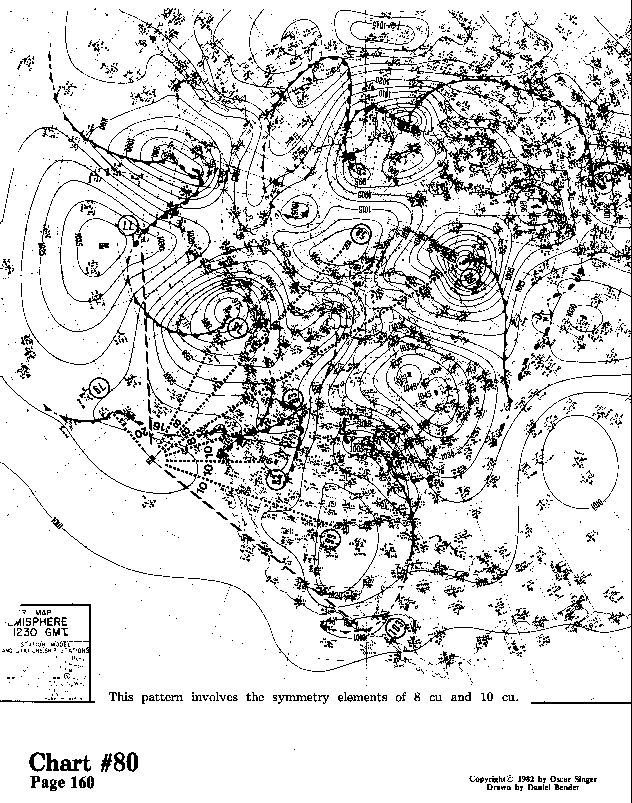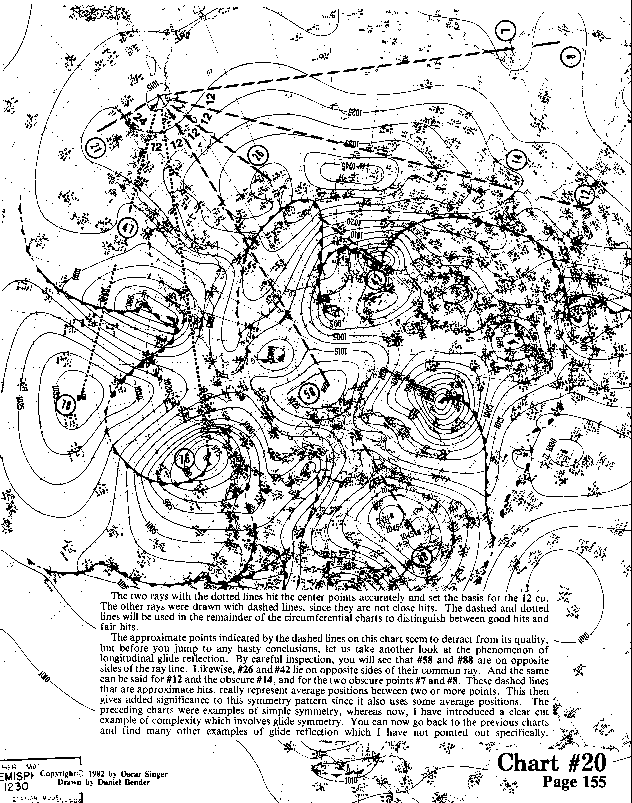
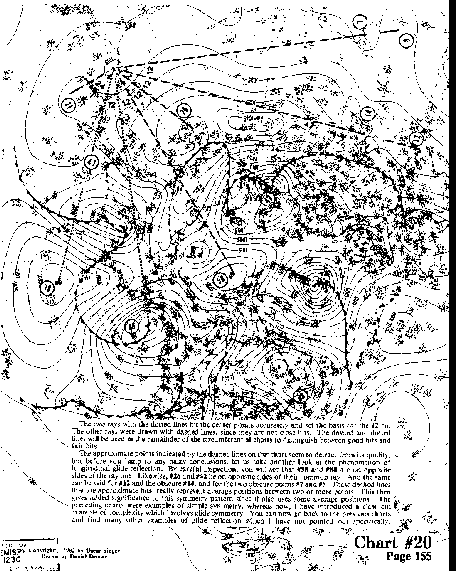
The two rays with the dotted lines hit the center points accurately and set the basis for the 12 cu The other rays were drawn with dashed lines, since they are not close hits. The dashed and dotted lines will be used in the remainder of the circumferential charts to distinguish between good hits and fair hits.
The approximate points indicated by the dashed lines on this chart
seem to detract from its quality, but before you jump to any hasty
conclusions, let us take another look at the phenomenon of longitudinal
glide reflection. By careful inspection, you will see that #58
and #88 are on opposite sides of the ray line. Likewise, #26 and
#42 lie on opposite sides of their common ray. And the same can
be said for #12 and the obscure #14, and for the two obscure points
#7 and #8. These dashed lines that are approximate hits, really
represent average positions between two or more points. This then
gives added significance to this symmetry pattern since it also
uses some average positions. The preceding charts were examples
of simple symmetry, whereas now, I have introduced a clear cut
example of complexity which involves glide symmetry. You can now
go back to the previous charts and find many other examples of
glide reflection which I have not pointed out specifically.

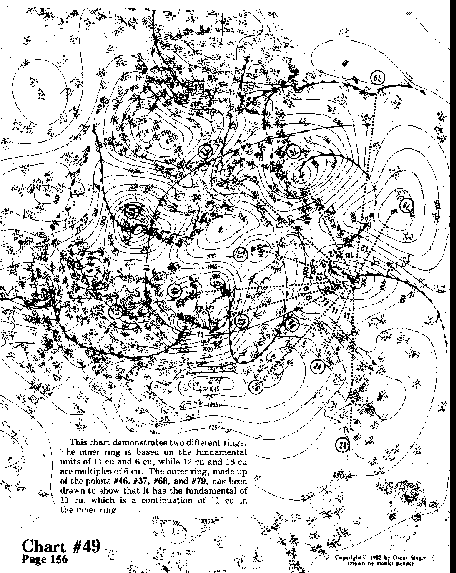
This chart demonstrates two different rings. The inner ring is based on the fundamental
units of 11 cu and 6 cu, while 12 cu and 18 cu are multiples of 6 cu. The outer ring, made up
of the points #46, #37, #60, and #79, has been drawn to show that it has the fundamental of
11 cu, which is a continuation of 11 cu in the inner ring.
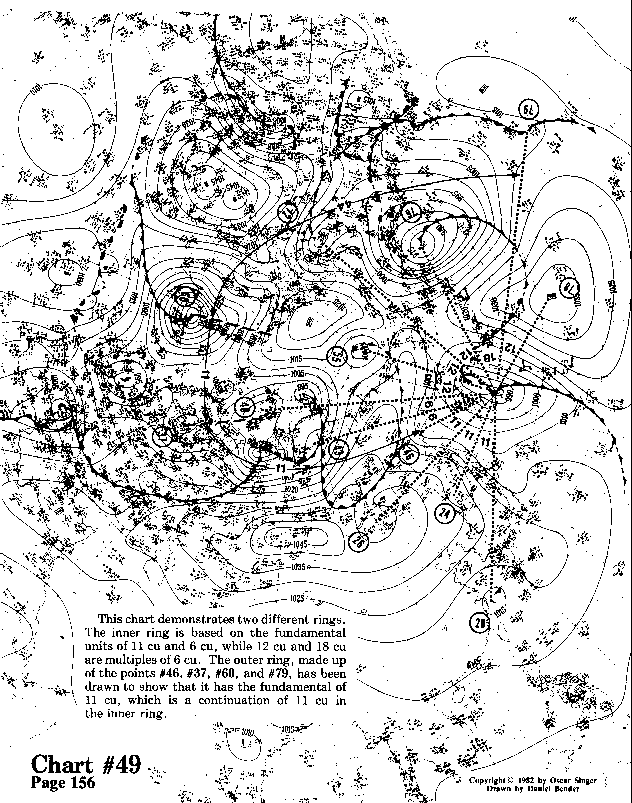
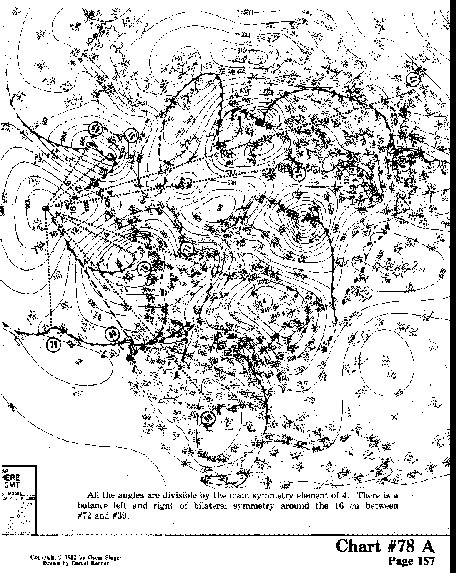
All the angles are divisible by the main symmetry element of 4.
There is a balance left and right of bilateral symmetry around
the 16 cu between #72 and #39.
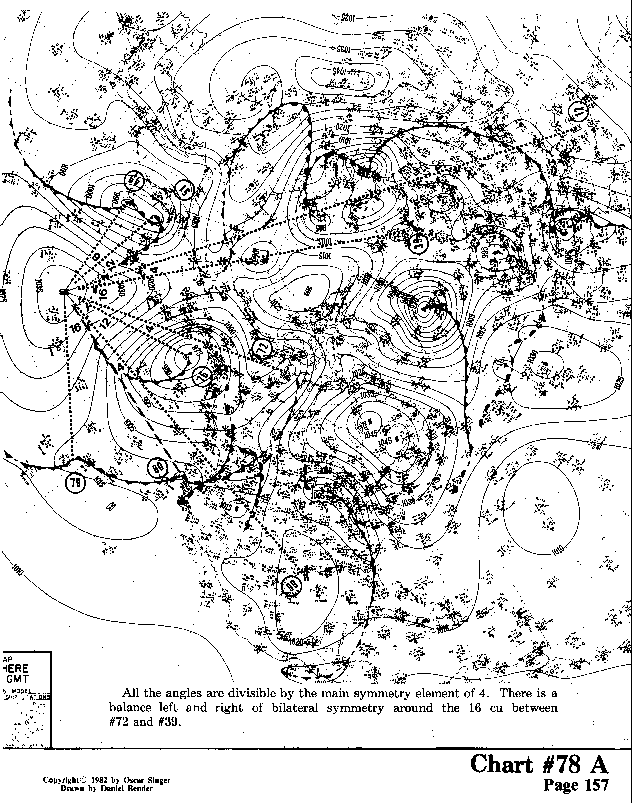
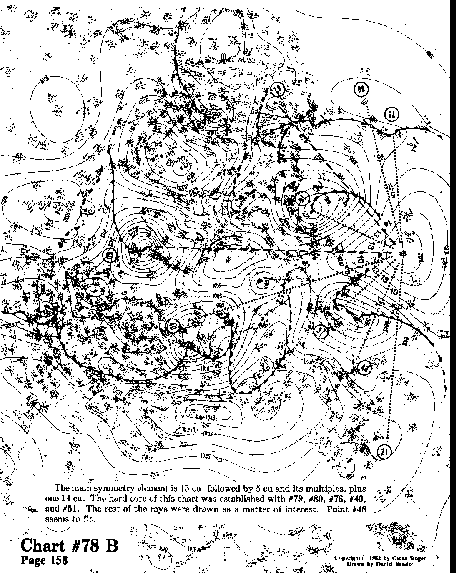
The main symmetry element is 13 cu, followed by 5 cu and its multiples,
plus one 14 cu. The hard core of this chart was established with
#79, #80, #76, #40, and #51. The rest of the rays were drawn as
a matter of interest. Point #48 seems to fit.
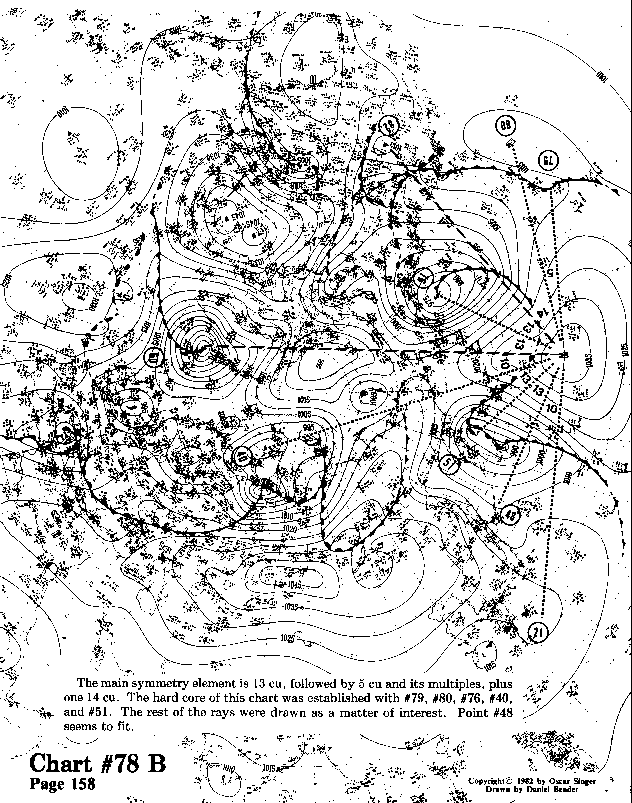
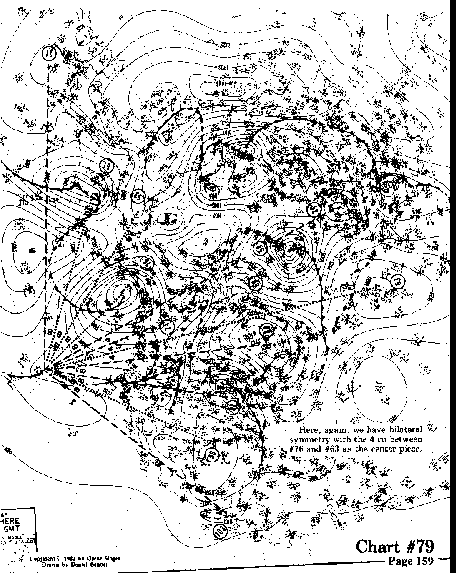
Here, again, we have bilateral symmetry with the 4 cu between
#76 and #63 as the center piece.
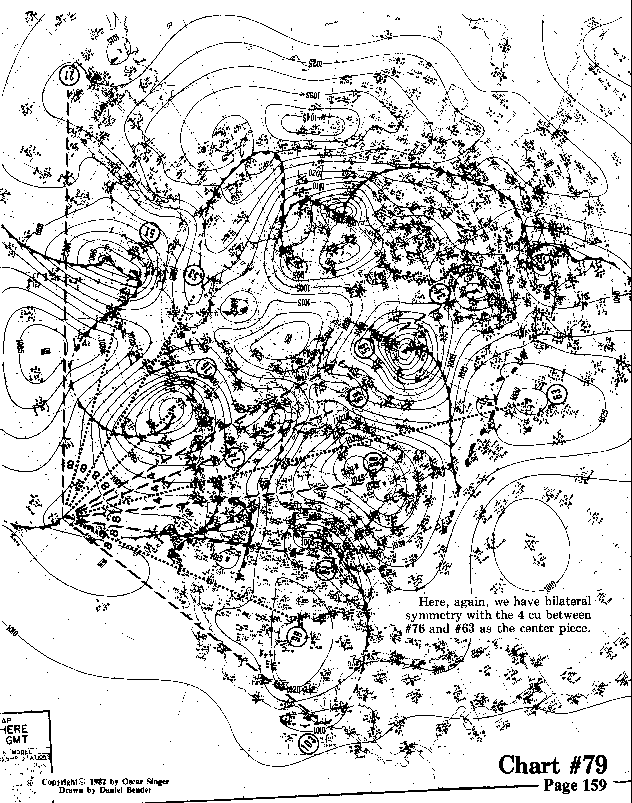
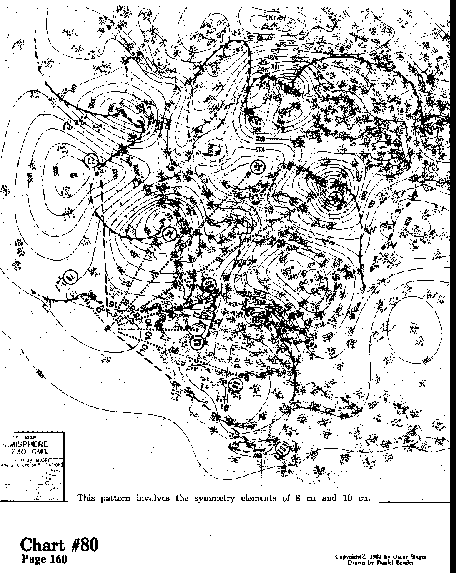
This pattern involves the symmetry elements of 8 cu and 10 cu.
